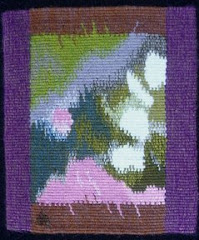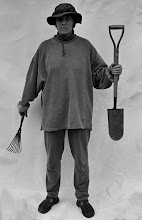Contemporary Art Textiles by the Massachusetts-Rhode Island chapter of the Surface Design Association 

It’s true, and it’s an excellent journal.

I was too late to enter this exhibit, but I drove there for the opening reception on Saturday. I got lost a few times, and seriously considered giving up and going home, but I finally found it, and I’m glad I did!

The juror was Alice Zrebiec. She selected Swimming Against the Tide, (above and right) by Nancy Crasco, for the SDA Award of Excellence. This piece is gelatin print, embroidery and stitching on silk organza, 36” x 36.”

I don’t know much about printing, so it was educational. I took a silk screening workshop about 40 years ago, but can’t remember much about it.
I was intrigued by the textile texture in this print, and the artist explained to me that she prints through lace.
The call for entries reads:
“Scope, materials and subject matter are open and submissions may include surface design, woven, 2D and 3D structures, quilts, stitching, or any other contemporary art textile technique.”


Nevertheless, most of the works in the exhibit are surface design, with very little that is woven or otherwise constructed.
I took an instant liking to this landscape, Chasm Lake, by Carol Ann Grotrian (above and right)
I love the ambiguity in the combination of shibori and hand quilting, which you can see much better in the detail.
I was introduced to a young artist from RI, Hannah Houston, a recent art school graduate. It’s nice to know there are still some young folks studying fiber arts.
Her piece, Under the Microscope, (left and below) is really stunning.

It is digitally printed with foil embossing.
I didn’t notice the title (Under the Microscope) until I got home, but it makes perfect sense when you look closely. I’ve always thought that microscope images could make great textile designs, and now I know it!

“Itajime clamp-resist on hand-woven hemp cloth, hand pieced with horsehair.”
I had no idea what itajime was, so I looked on Elin’s website and found this description:
“Itajime shibori, or clamp-resist dyeing, is based on wooden boards held on either side of accordion folded cloth, then dyed.”
That sounds exciting! I wonder if there are surprises after the dyeing? I love the horse-hair stitching.
Don’t forget, you can click on most of these photos and see a larger version.
Better yet, go see the exhibit!








